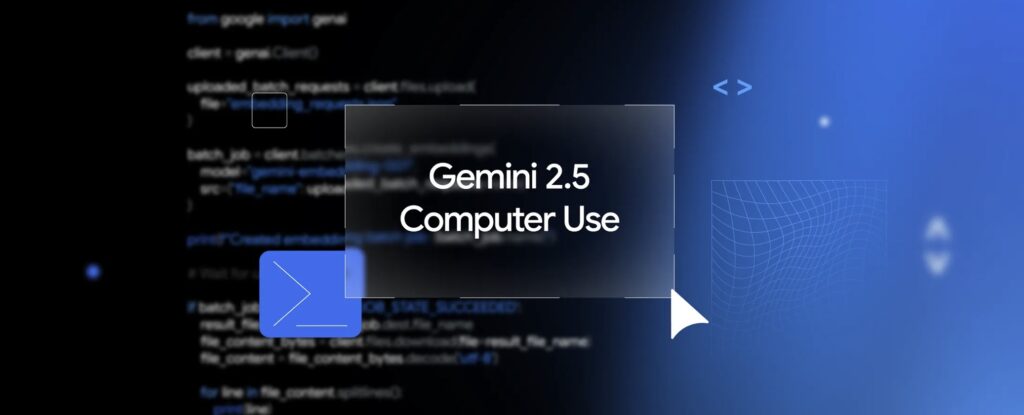Unleashing Scalable Accelerators and Arm-Based Instances Amid Surging AI Inference Demands
- Unprecedented AI Acceleration: Google’s new Ironwood TPUs scale up to 9,216 chips in a single pod, delivering over 118x more FP8 ExaFLOPS than competitors and powering massive models like Gemini and Claude for training and inference.
- Efficient General-Purpose Computing: The expansion of Axion instances, including N4A and C4A metal, offers up to 60% better energy efficiency and 50% higher performance than x86 alternatives, optimizing workloads from data analytics to AI hosting.
- Broader Industry Impact: These innovations address the exploding need for AI agents and inference, with enhanced software tools like MaxText and vLLM, positioning Google as a leader in cost-effective, versatile AI infrastructure for enterprises and startups alike.
In an era where artificial intelligence is no longer a futuristic dream but a daily reality powering everything from search engines to personalized recommendations, Google LLC has just upped the ante. Today, the tech giant announced the rollout of its custom Ironwood tensor processing units (TPUs) for cloud customers, marking a significant leap in AI hardware capabilities. These aren’t just incremental upgrades; they’re designed to handle the explosive growth in AI inference—the real-time “thinking” phase of models that respond to user queries. With AI agents demanding deeper reasoning and task management, the need for robust compute power has surged, and Ironwood steps in as Google’s most powerful TPU architecture yet. Available in the coming weeks, alongside new Arm-based Axion instances, this launch promises to make high-performance AI more accessible and efficient, potentially reshaping how businesses deploy intelligent systems.
At the heart of this announcement is Ironwood, debuted at Google Cloud Next 2025 in April and hailed as the company’s most potent TPU accelerator to date. Imagine a massive network of 9,216 chips working in unison within a single server pod, connected via an inter-chip interconnect (ICI) that provides a staggering 9.6 terabits per second of bandwidth. This “data highway” allows the chips to function as one cohesive AI brain, overcoming the challenges of modern models that are too large for a single processor and must be distributed across thousands for parallel processing. Think of it like a bustling city where traffic jams could cripple operations—Ironwood’s enhanced bandwidth minimizes delays, ensuring seamless communication. Complementing this is access to 1.77 petabytes of shared high-bandwidth memory (HBM), an industry-leading figure that equates to storing the text of millions of books or 40,000 high-definition Blu-ray movies. This vast, instantly accessible memory enables AI models to “remember” and process enormous datasets in real time, leading to faster, more intelligent responses.
Performance-wise, Ironwood doesn’t disappoint. Google claims it delivers more than 118 times the FP8 ExaFLOPS of its nearest competitor and quadruples the training and inference capabilities of its predecessor, Trillium. But hardware alone isn’t enough; Google has layered on sophisticated software to maximize these gains. A new Cluster Director in Google Kubernetes Engine offers advanced maintenance and topology awareness for smarter process scheduling. For model training, enhancements to MaxText—an open-source framework for large language models—support reinforced learning techniques. Meanwhile, upgrades to vLLM enable seamless inference switching between GPUs and TPUs, or even hybrid setups. Early adopter Anthropic PBC, whose Claude models are already running on Ironwood, praises the chips for their impressive price-performance, allowing them to scale up to a million TPUs. As Anthropic’s Head of Compute James Bradbury noted, this is crucial for handling exponentially growing demand in AI research and product development, from Fortune 500 companies to nimble startups.
Complementing Ironwood’s specialized AI prowess are the expanded Axion offerings, Google’s custom Arm-based central processing units (CPUs) tailored for energy-efficient, general-purpose workloads. The new previews include N4A, second-generation virtual machines with up to 64 virtual CPUs and 512 gigabytes of DDR5 memory, and C4A metal, the first Arm-based bare-metal instances boasting up to 96 vCPUs and 768 gigabytes of memory. These join the existing C4A instances for high-performance needs. According to Mark Lohmeyer, Google’s VP and GM of AI and computing infrastructure, Axion processors deliver 30% higher performance than the fastest cloud Arm processors today, 50% better than comparable x86 generations, and 60% superior energy efficiency. This design philosophy leverages Arm’s expertise in efficient CPU architecture, making Axion ideal for tasks like data preparation, analytics, and hosting AI applications. When paired with Ironwood, they form a powerhouse duo for complex workflows, blending general computing backbone with specialized acceleration.
Zooming out, Google’s Cloud TPUs represent a broader evolution in AI infrastructure. Originally developed internally in 2015 and made available to third parties in 2018, TPUs are application-specific integrated circuits (ASICs) optimized for neural networks using frameworks like TensorFlow, PyTorch, and JAX. They’re built for high-volume, low-precision computations—down to 8-bit precision—focusing on matrix operations without the graphics overhead of GPUs. This makes them perfect for convolutional neural networks (CNNs), large language models (LLMs), recommendation engines, and even healthcare applications like protein folding or drug discovery. SparseCores accelerate embedding-based models, while integration with Google Kubernetes Engine and Vertex AI simplifies orchestration and development. Unlike GPUs, which excel in parallel data processing for graphics and some fully connected networks, TPUs shine in AI-specific tasks with their matrix multiply units (MXUs) and proprietary interconnects, offering more input/output operations per joule.
The advantages extend to scalability and cost-efficiency across training, fine-tuning, and inference. Google’s own frontier models—Gemini, Veo, and Imagen—are trained and deployed on TPUs, serving over a billion users in applications like Search, Photos, and Maps. For businesses, this means reliable, secure infrastructure that handles everything from media generation to personalized services. As AI agents redefine computing with their need for advanced reasoning, Ironwood and Axion address the inference boom head-on, potentially outpacing competitors in price-performance. In a world where AI demand is skyrocketing, Google’s latest moves not only bolster its cloud ecosystem but also democratize access to cutting-edge tools, empowering innovators to push boundaries without breaking the bank. Whether you’re building the next big AI agent or optimizing everyday workflows, these advancements signal a thrilling chapter in the AI revolution.


